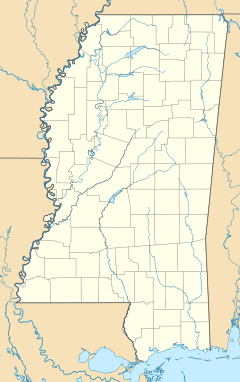- Natchez District
-
The Natchez District was one of two areas, the other being the Tombigbee District, that were the first to be colonized by British subjects from the Thirteen Colonies and elsewhere in what was West Florida and would later become the Mississippi Territory. The district was recognized to be the area east of the Mississippi River from Bayou Sara in the South (presently St. Francisville, Louisiana) and Bayou Pierre in the North (presently Port Gibson, Mississippi). Today, this area corresponds roughly with and includes most of the lands south of Interstate 20 and west of Interstate 55 in the State of Mississippi in the southwest corner of the state.
The Natchez District was the first plantation area in Mississippi and also the richest area in the Deep South before the Civil War. One plantation owner by the name of Stephen Duncan was reported to have owned over 1,000 slaves, making him the wealthiest cotton plantation owner in the world then.
The area had been known to the Europeans for many years. The French explorer, Pierre Le Moyne d'Iberville, had passed through the area in 1699 and had christened both the Amite River and the Tangipahoa River. In the early 18th century, French colonists began to introduce African slaves and the plantation system to the area. The first important plantation crop was tobacco.
In 1774 Britain extended the borders of its new colony of West Florida from the 31st parallel north to 32° 22′ north, in part to give colonists access to the fertile Natchez District and the Tombigbee District. By 1776, there was a sizable colony of English-speaking planters there. By a treaty with Spain after the Revolutionary War, the Natchez District became a part of the United States. The area was of great strategic value to the US then because it was the most extreme western and southern limits of the territory claimed by the United States in 1798. In April 1798, the United States created the Mississippi Territory with Natchez as its first capital.
It wasn't until the 1790s, after Whitney’s cotton gin was perfected, that planters in the Natchez District became very wealthy. Between 1785 and 1800 all the tobacco plantations in the district were converted to cotton. The rich loess soils proved very fertile for cotton cultivation. The planters developed new, more productive strains of cotton, improved cotton gins, and a large scale system using large numbers of slaves and machinery.[1] Many cotton planters became so wealthy that they were able to acquire thousands of acres worked by hundreds of African slaves, on which they built elegant mansions in and around the town of Natchez, and hired overseers to live at and manage their plantations in the countryside.
In 1806, an improved Mexican variety of cotton made it even more profitable. The Mexican variety was crossed with the older black seeded species to make improved varieties that made the State of Mississippi famous. The most famous varieties of all, Belle Creole, Jethro, Parker and Petit Gulf, were bred in Mississippi.
The cotton boom of the early 19th century spread across the Old South from two primary cultural hearths—coastal South Carolina and the Natchez District. From Natchez, the cotton plantation system spread north into the Mississippi embayment region, and west along the rivers of Louisiana, Arkansas, and Texas.[2]
Before 1810, Natchez was the only town in the region that was not under foreign control. Because of its strategic importance and its rapid growth as a cotton port, the US government built or improved roads leading to Natchez. The US Army widened the Natchez Trace into a wagon road and placed it under the care of the Post Master General of the United States, making it one of the earliest federal interstate highways.
References
- ^ Moore, John Hebron (1988). The emergence of the Cotton Kingdom in the Old Southwest: Mississippi, 1770-1860. LSU Press. pp. 4–13, 117, 286–287. ISBN 9780807114049. http://books.google.com/books?id=YI-M2q99VIcC&pg=PA4. Retrieved 23 March 2011.
- ^ Meinig, D.W. (1993). The Shaping of America: A Geographical Perspective on 500 Years of History, Volume 2: Continental America, 1800-1867. Yale University Press. pp. 286–288. ISBN 0-300-05658-3.
External links
- http://www.tennessean.com/williamsonam/news/archives/05/03/68951816.shtml
- http://uts.cc.utexas.edu/~pmullins/chapter05.htm
- http://ocean.otr.usm.edu/~aloung/afram.html
Coordinates: 31°30′56″N 91°10′11″W / 31.51556°N 91.16972°W
Categories:- Regions of Mississippi
- Natchez Trace
- History of Mississippi
Wikimedia Foundation. 2010.

